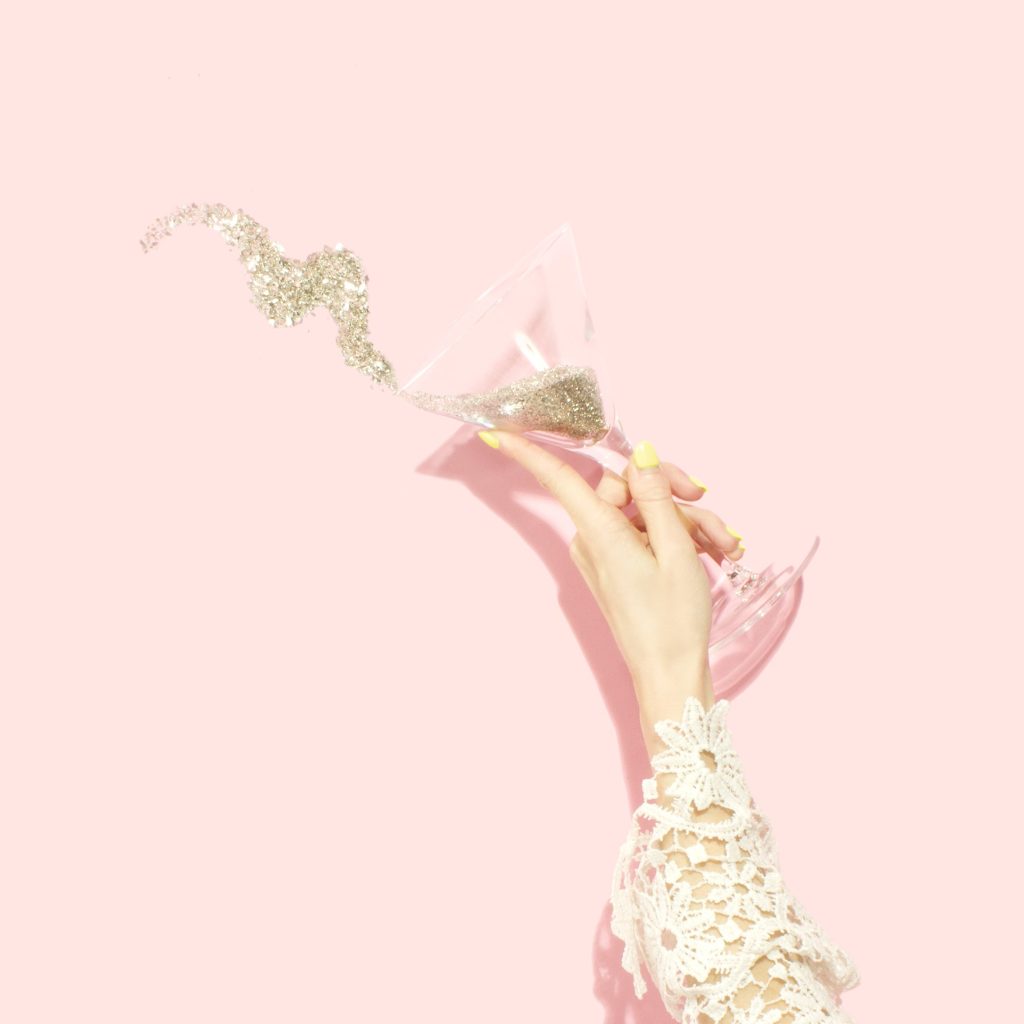
Sparkling rosé is many things, but above all, it’s just plain fun.
Sparkling rose is a category of pink wine. Prosecco, Champagne, and Moscato can all be made in a sparkling rose style. Sparkling rose wines can be sweet or dry. Rose sparkling wines make excellent mimosas and great pairing partners for light summer foods.
Here’s a rundown of everything you need to know about sparkling rose wine, and then some!
- Is a rosé a sparkling wine?
- What’s the Difference Between Rose and Sparkling Wine?
- Is Sparkling Rose Wine or Champagne?
- Is Sparkling Rose Sweet or Dry?
- Does Rosé Sparkling Wine Have Alcohol?
- How Do You Drink Sparkling Rose Wine?
- Why Is Sparkling Rose More Expensive?
- Is Rosé Sparkling Wine Prosecco?
- What Does Sparkling Rose Taste Like?
- Is Moscato a Sparkling Rose?
- What Does Sparkling Moscato Rose Taste Like?
- Is Rosé Sweeter than Brut?
- Is Sparkling Rose Good for Mimosas?
- What Pairs Well with a Sparkling Rose?
- Final Thoughts – Celebrate with Rose Sparkling Wine!
- Thirsty for more?
Is a rosé a sparkling wine?
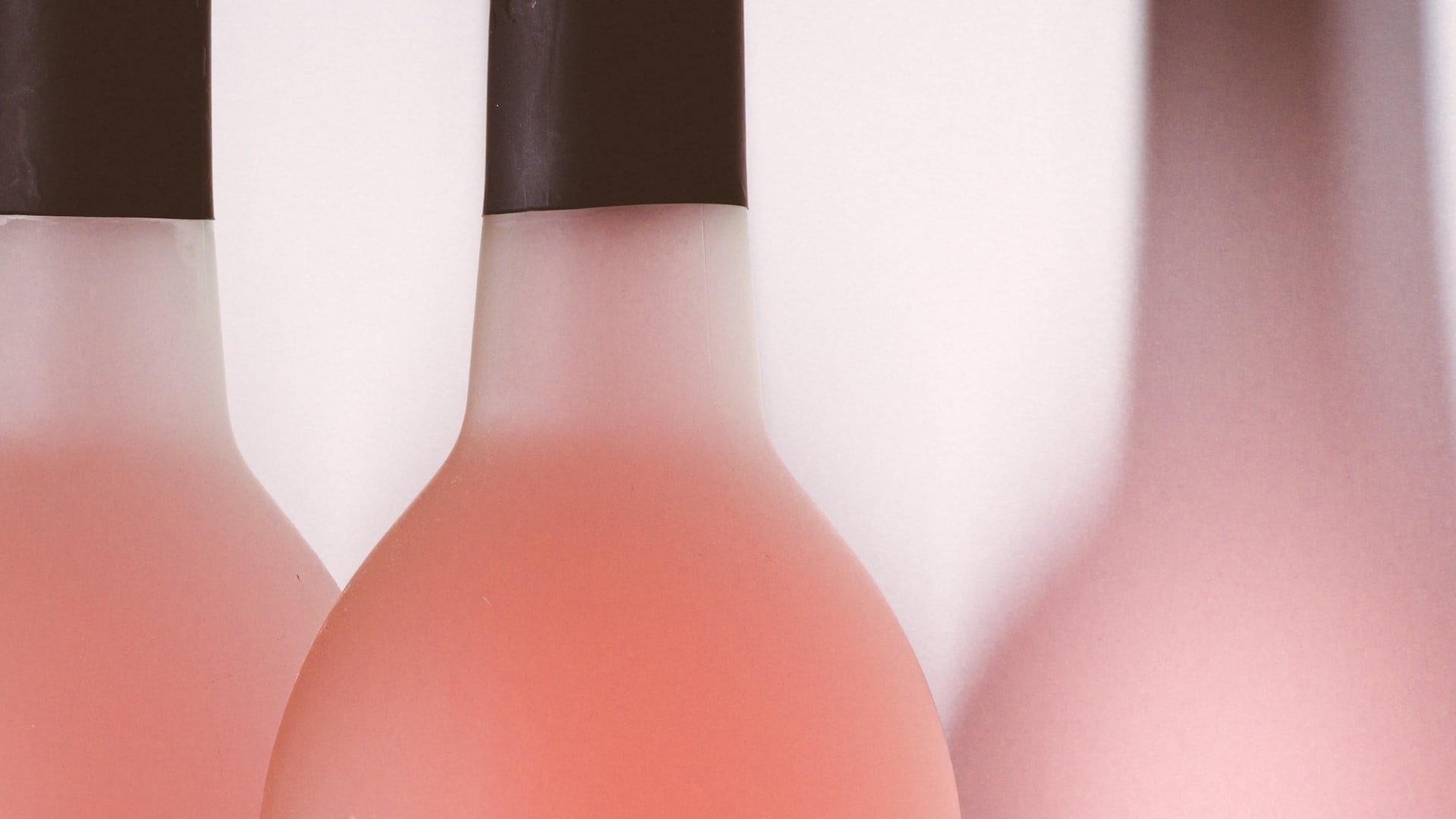
No, all rosé wines aren’t sparkling wines. A rosé wine can be made in three different ways: 1) still, 2) semi-sparkling or 3) fully sparkling. The rose or pink color in your wine comes from red grape skins that dye the grape juice pink during the winemaking process.
The bubbles (or the absence of bubbles) also come from the winemaking process. The winemaker decides how pink they want the wine and how bubbly they want the wine.
Helpful tip: Check out this quick overview post on how they make rose wines.
What’s the Difference Between Rose and Sparkling Wine?
Rose is a pink wine that can be still or bubbly. Sparkling wine is always bubbly and can be white, rosé, or even red (like Lambrusco from Italy). One thing rosé and sparkling wine have in common: Both can be made in dry, off-dry, or sweet styles.
Is Sparkling Rose Wine or Champagne?
Sparkling rosé is a style of wine. Pink Champagne, or rosé Champagne, is also wine, but it was made in the Champagne region of France.
A good analogy is a red Ferrari which is a type of car made in Italy, but not all cars are red Ferraris, and not all cars are made in Italy (rose Champagne is the red Ferrari in this analogy).
Sparkling roses can come from anywhere in the world where they grow red wine grapes. Rose Champagne can only come from Champagne, France.
So: Is sparkling rose wine or Champagne? A sparkling rosé is a wine. And if it came from Champagne, France, it’s a Champagne.
Is Sparkling Rose Sweet or Dry?
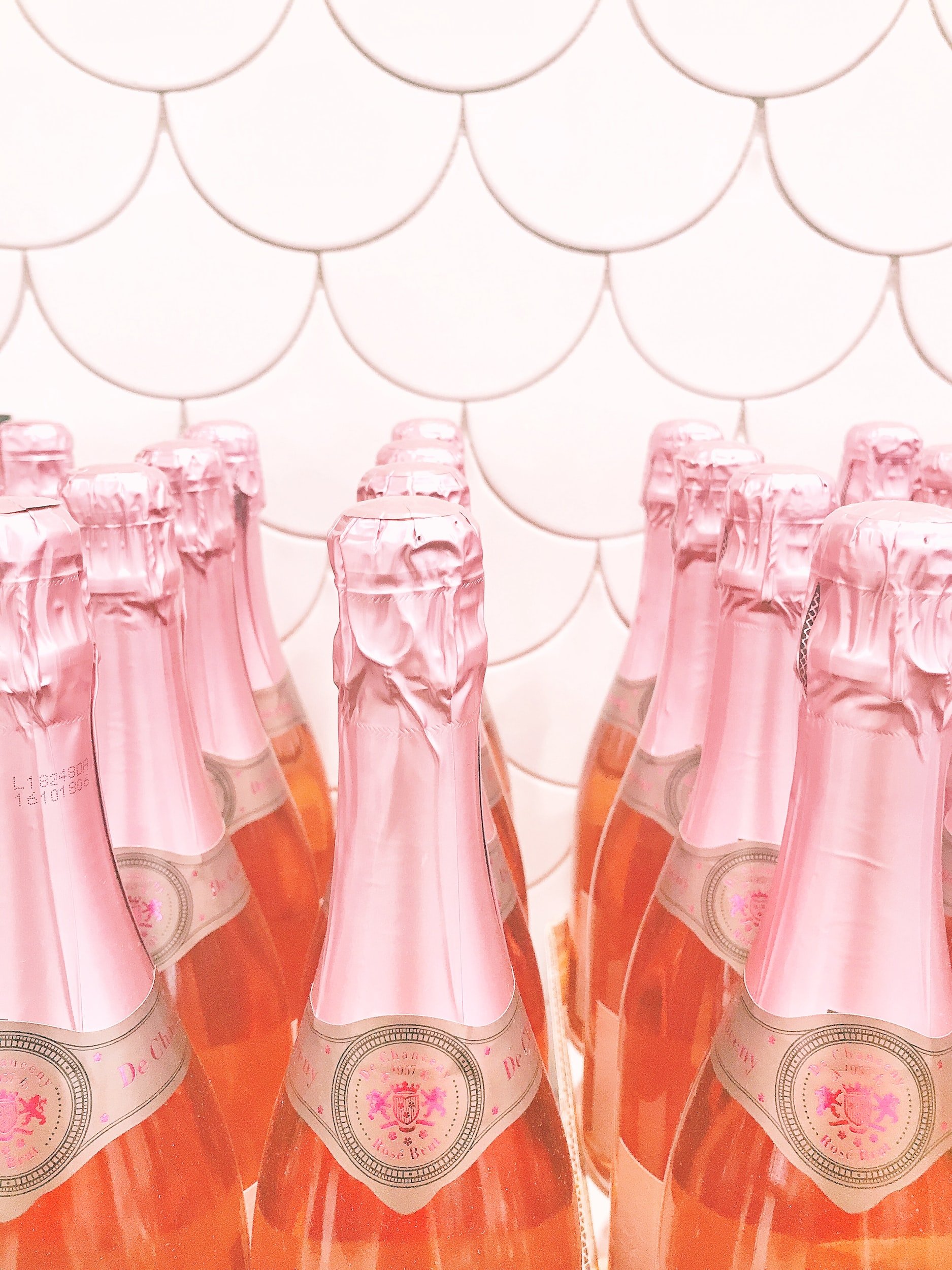
Sparkling rosés can be sweet, medium-sweet, or dry with a creamy texture from fine bubbles that lift up raspberry, cherry, strawberry, citrus, and floral notes.
The European Union (and most of the rest of the winemaking world) follows a standard scale for labeling wines with sugar measured in grams per liter.
Here’s the sweet-to-dry breakdown which can be helpful if you’re watching calorie intake or have other dietary concerns.
- Zero Dosage/Brut Nature – 0-3 g/L
- Extra Brut – 0-6 g/L
- Brut (Dry) – 0-12 g/L
- Extra Dry 12-17 g/L
- Sec/Dry 17-32 g/L
- Demi Sec/Medium Dry 32-50 g/L
- Doux/Dulce/Sweet 50+ g/L
What does this look like in your glass (because you’re probably not going to be drinking a liter of sparkling rosé straight from the bottle – I suppose you could, who am I to judge?).
Brut (0-12 g/L) is the most popular style of sparkling rosé wine. This means that your glass of sparkling rosé wine will have ½ teaspoon of sugar in it (2.25 grams).
So: Does Sparkling Rose Have a Lot of Sugar?
As a general rule, sparkling rose doesn’t have very much sugar in it (not compared to soda or juice). Read your wine label to check how much sugar is in your sparkling rosé.
If you choose a brut sparkling rosé, then a typical 5 oz glass will have about 2 grams of sugar (about ½ of a teaspoon).
If you choose dry or extra dry, then your sparkling rose will be sweeter and have more sugar.
Here’s a helpful chart that shows how much sugar is in your sparkling rose depending on the style:
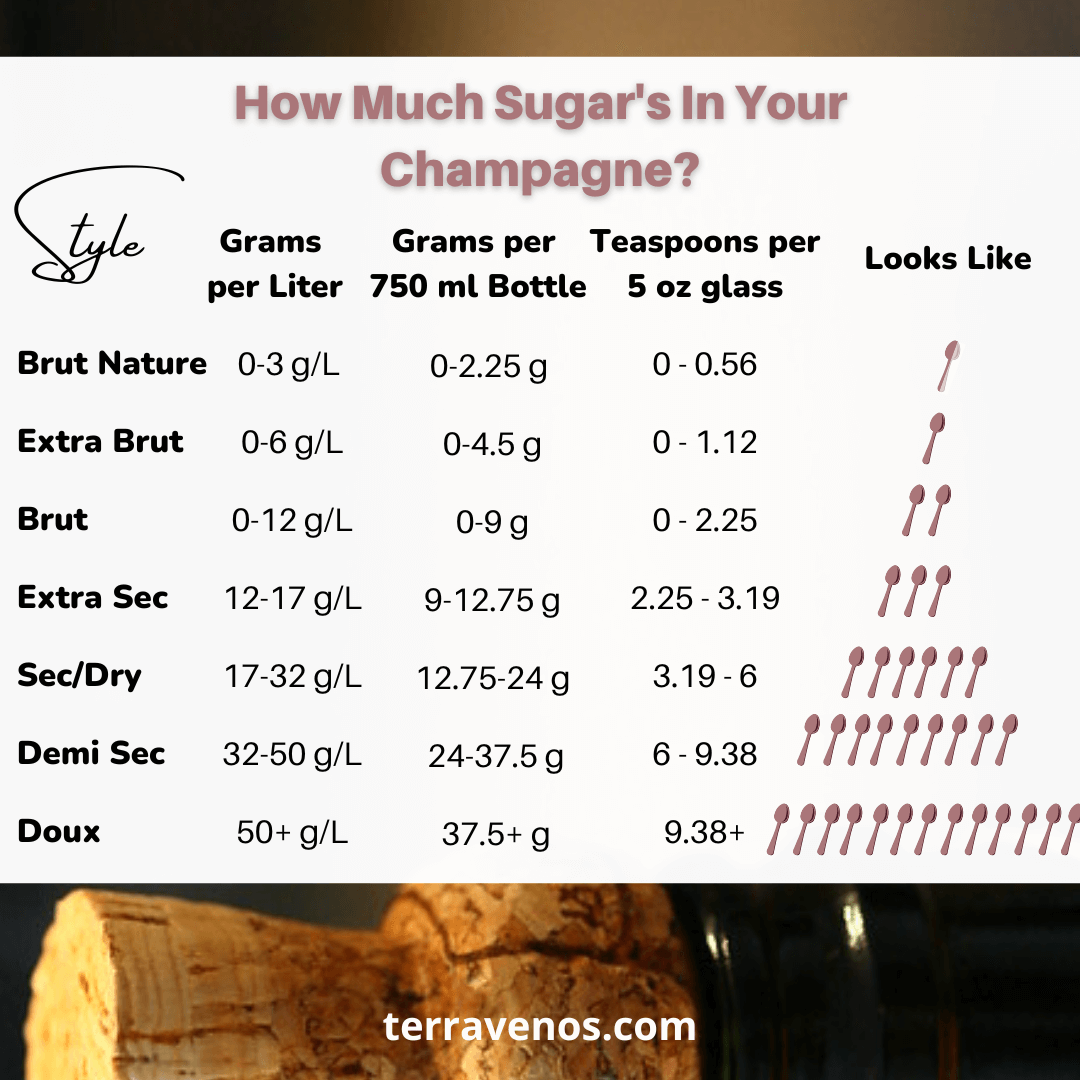
Does Rosé Sparkling Wine Have Alcohol?
Yes, rosé sparkling wine has alcohol unless you buy a non-alcoholic sparkling beverage. Most sparkling wine roses will have 10%-13% ABV.
Just how much alcohol is in sparkling rose? Here’s a breakdown:
- Sparkling Rose Champagne will have a maximum of 13% ABV.
- Sparkling Rose Prosecco will have a minimum of 10.5-11% ABV.
- Sparkling Rose Asti DOCG (from Italy) will have 6-8% ABV.
Sparkling rose wines made in winegrowing regions outside of regulated zones (like California) will have varying levels of alcohol depending on the sparkling wine style and winemaker’s craftsmanship.
Discover: Goat Cheese and Wine Pairing Guide and this Rose Cheese Pairing Guide for more fun cheese and wine pairing ideas.
How Do You Drink Sparkling Rose Wine?
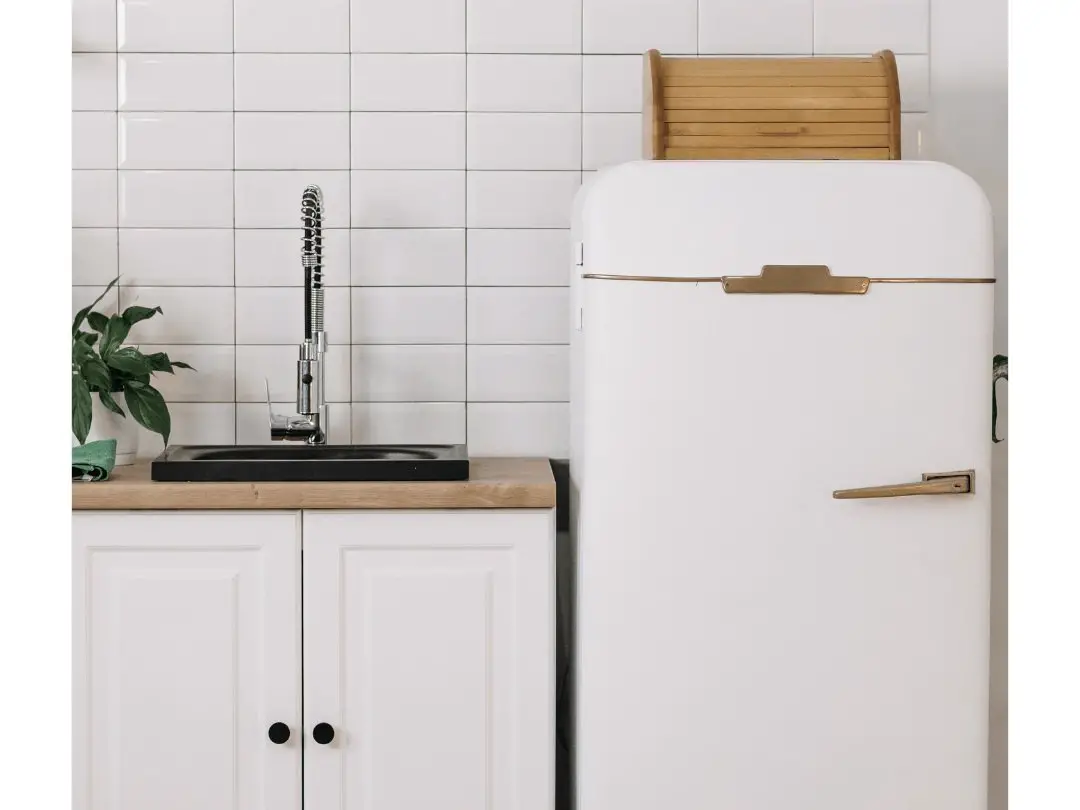
Drink your sparkling rosé well-chilled. Take it directly out of the refrigerator and pour yourself a glass to enjoy. Feeling creative? You can use sparkling rose wines to make fun spritzers and cocktails.
Keep leftover sparkling rose chilled in an ice bucket or in the refrigerator. Cold temperatures help to keep the CO2 (bubbles) dissolved in the liquid. Warmer temperatures will cause your sparkling rose wine to go flat more quickly.
Helpful Tip: Check out this post on how to store leftover sparkling wine.
Why Is Sparkling Rose More Expensive?
Sparkling rose wines are generally more expensive than just white sparkling wines. Here’s why sparkling rosé is more expensive:
- Additional Production Costs. This has to do with the fact that making sparkling rose wines involves more steps, and therefore additional costs in production. The pink color that you see in your bottle isn’t stable, and the winemaker needs to be precise in adding red wine at exactly the right time to get the pink hue that you see in your glass.
- Limited Availability. The added production costs and specialized skills needed to make sparkling rose wines mean that there’s less on the market compared to white sparkling wine.
- Increased Demand and Prestige. Sparkling rosé wines are also trending right now among consumers, meaning producers can charge a premium for rosé sparkling wine.
Is Rosé Sparkling Wine Prosecco?

Proseccos can be made into rosé sparkling wines, but not all rosé sparkling wines will be Prosecco. Prosecco is made in the northeastern region of Italy using the tank method to introduce sparkles.
Just recently in 2020, the local regulations allow for a rosé variety of Prosecco designated spumante rosé, which must contain Glera (the main grape in Prosecco) blended with 10–15% Pinot noir. If your sparkling rose was made in this region of Italy, it’s a Prosecco.
Here’s a complete guide to Glera wine.
Rose Prosecco has gained widespread popularity outside of Italy as an inexpensive, accessible sparkling rose wine.
Jargon Alert: Tank method is a type of sparkling wine production. Prosecco goes through fermentation turning the juice into wine in large tanks, then the winemaker adds more sugar and yeast to the new wine and seals the tank to capture the C02 the yeast give off, which dissolves into the wine and makes happy bubbles. Because the tank method wine can be made in large tanks, this reduces production costs making tank method wine more affordable for wine lovers.
So: Is Rosé a Type of Prosecco?
Not necessarily. Rose is a type of pink wine. Prosecco is a sparkling wine made in northeastern Italy and can be made in a white or rosé style.
Rosé Prosecco currently comes in three styles: 1) Brut Nature or Brut Zero which is bone-dry with only 0-3 grams of sugar per liter 2) Brut, which is dry and the most popular style of sparkling, and 3) Extra Dry or Extra Sec which is, confusingly, slightly sweeter.
What Does Sparkling Rose Taste Like?
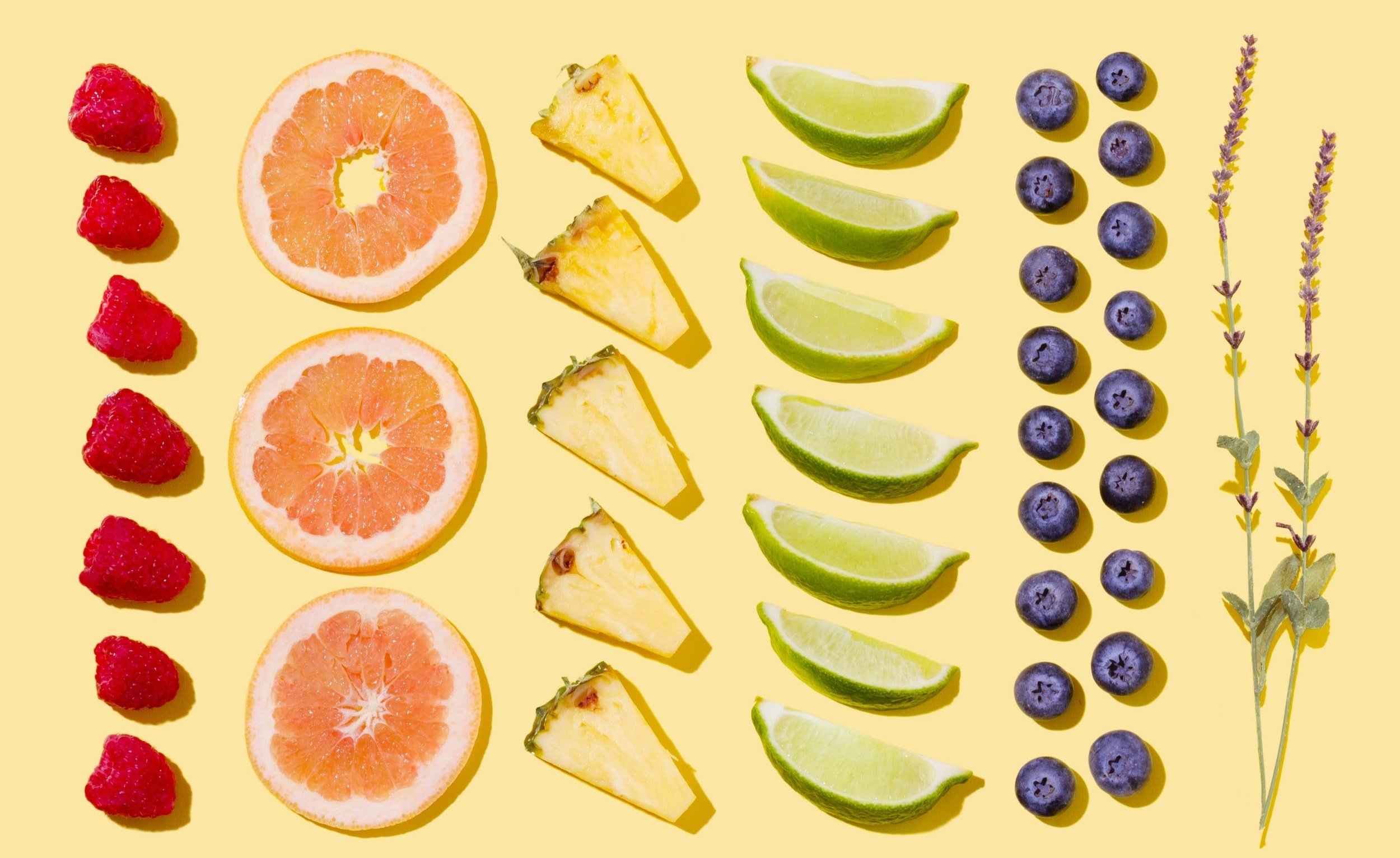
Sparkling rose wine tastes like light citruses, like lemon and lime, and pink floral notes, like rose petals, red strawberries, raspberries, cherry, and apple and melon notes. Because sparkling rosé wines are made using a blend of grapes, expect a range of flavors.
If you’re drinking a Champagne rose, or a rose made in the traditional Champagne method, expect light cream and toasty brioche notes in the background.
If you are drinking a zero dosage or brut nature (no sugar added) sparkling rose, the citrus flavors tend to dominate with more lime and lemon zest, and maybe even some grapefruit and green melon.
Is Moscato a Sparkling Rose?
Moscato is the Italian name for Muscat, one of the world’s oldest grapes that makes beautifully perfumed and aromatic wines.
Winemakers around the world use Moscato grapes to craft sparkling rosé wines that are lower in alcohol (usually under 11% ABV) and slightly sweet. Not all sparkling roses will be Moscato. Sparkling roses can be Champagnes or Proseccos, too, for example.
And not all Moscato will be made into sparkling roses. Moscatos can be dry white wines, fortified white wines, or even sparkling white wines.
What Does Sparkling Moscato Rose Taste Like?
Moscato rosé is a light red sparkling with an intense fresh aroma of peach, sage, orange, and raspberry. It tastes sweet, fragrant, and full, with hints of peach, strawberry, and citrus. Sparkling Moscato rose is a great accompaniment to dessert and fruit.
Is Rosé Sweeter than Brut?
Some rosés made in off-dry to medium sweet styles will have more sweetness than Brut wines. For example, White Zinfandel, a popular style of rose wine in the US, has 5 grams per liter of sugar, which is over twice as much sugar as Brut Champagne.
Pale pink, delicate Provence rosé wines are always dry. Your Brut Champagne may technically have more sugra than your glass of rose wine from Southern France.
Rose wines can be absolutely dry (meaning no sweetness at all) or medium-sweet (meaning the sugar’s a prominent feature in the wine that you can taste). Brut is a French word used to describe sparkling wines that have 0-12 grams per liter of sugar in them (between 0 and about ½ teaspoon of sugar per glass).
The naturally high acid in sparkling wines, like Champagne, means that you probably won’t be able to taste the sugar in your Brut rose sparkling wine if it’s there.
Is Sparkling Rose Good for Mimosas?

Sparkling rosé wines are an excellent option for mimosas with their effervescence and citrus and berry profile. Try your blending your sparkling rose with guava juice, pineapple juice, white grape juice, cranberry juice, or tropical blends to give your mimosa a special flare.
Helpful Tip: Stick with a brut style of sparkling rose for mimosas.
The juice already brings significant sugar, so you won’t need additional sweetness from your wine.
What Pairs Well with a Sparkling Rose?
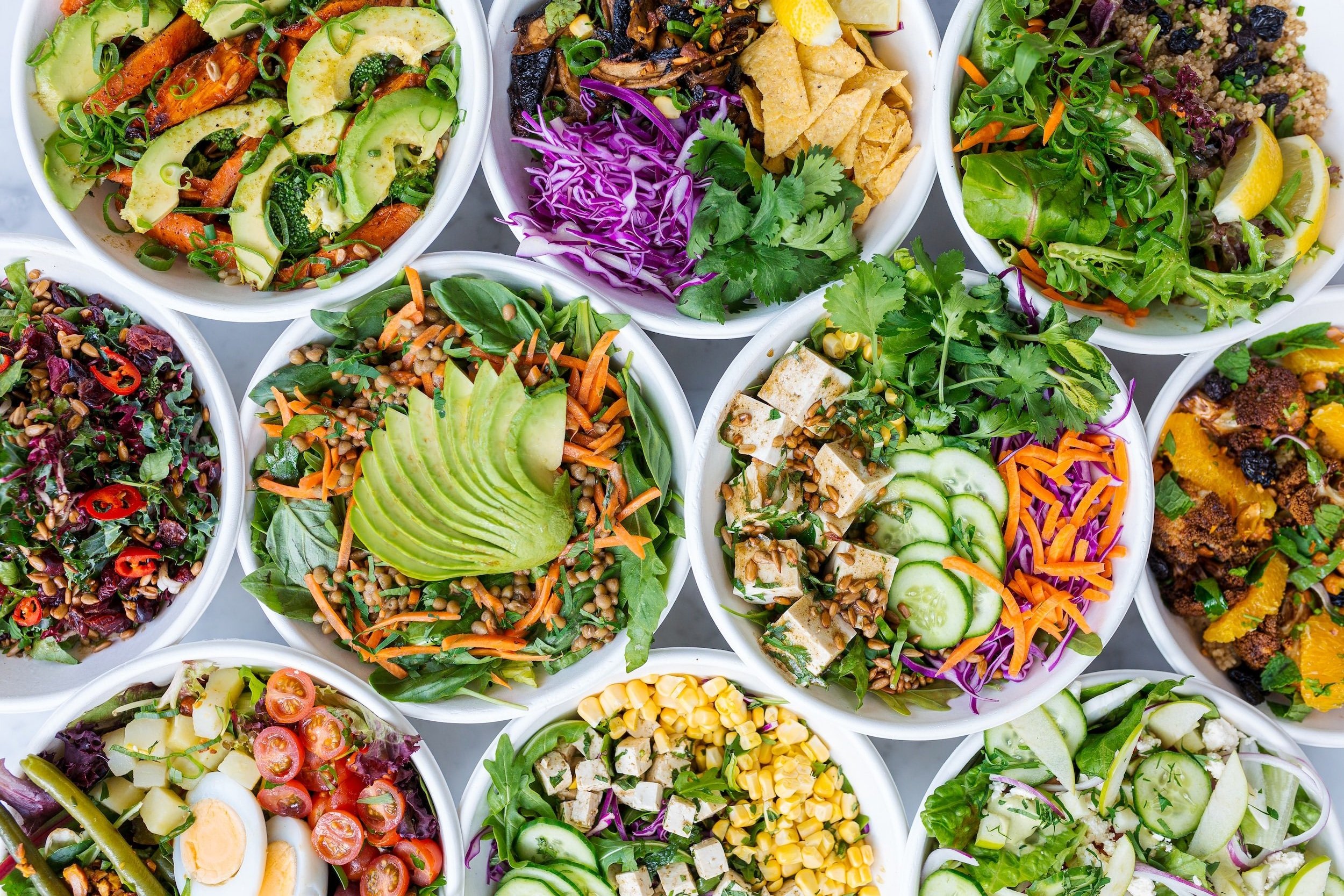
Sparkling rosés display versatility in food paring. Sparkling rosé wines have higher acid, which keeps them fresh and compliments their spritely effervesence. Sparkling rose’s light profile makes it a wonderful pairing partner with lighter foods, like summer salads.
The acid also works to cut through grease and fat, refershing your palate after every bite.
Here are some sparkling rose pairing ideas to get you started:
- Sushi rolls
- Oysters
- Poached white fish
- Soft cheese
- Charcuterie with olives
- Ravioli with white sauce
- Pasta with pesto
- Herbed pork roast
- Summer salads
- Fried chicken
- Potato chips
Final Thoughts – Celebrate with Rose Sparkling Wine!

This bubbly pink beverage delights the senses. From its baby-pink hue to dancing bubbles and delightful zing, rose sparkling wines bring joy. Whether you decide to go with a rose Prosecco, a rose Champagne, or a rose sparkling wine from a different region entirely, it’s worth exploring this emerging wine style to find a bottle that you love.
Thirsty for more?
I know firsthand exactly how challenging it is trying to figure out different wine terms. So, I wrote this post on Is Prosecco Just Cheap Champagne? Which may be helpful if your drinking sparkling wines.
And here’s an even better post on how sparkling wine bottles use label terms to describe how much sugar’s actually in them.



